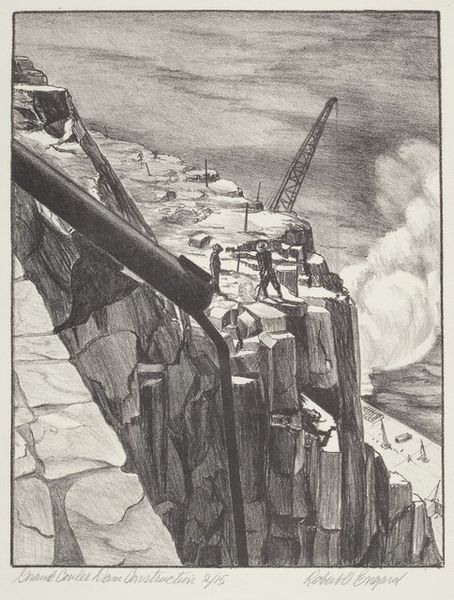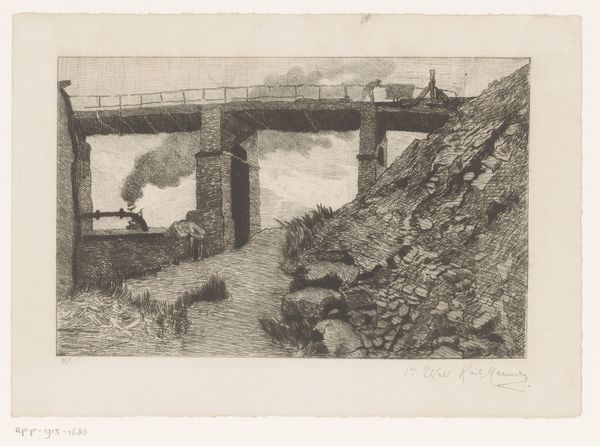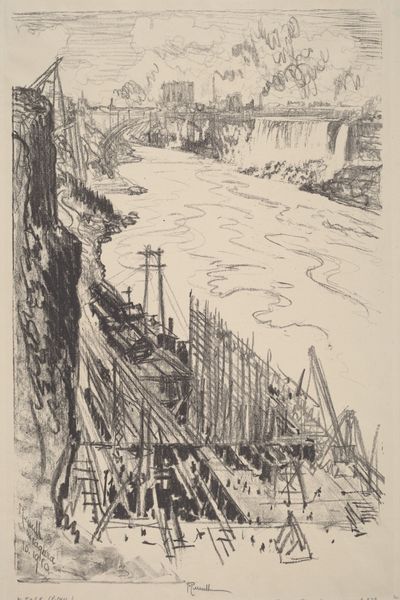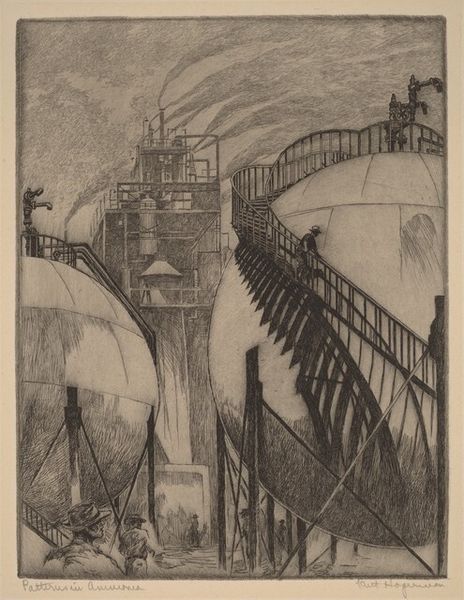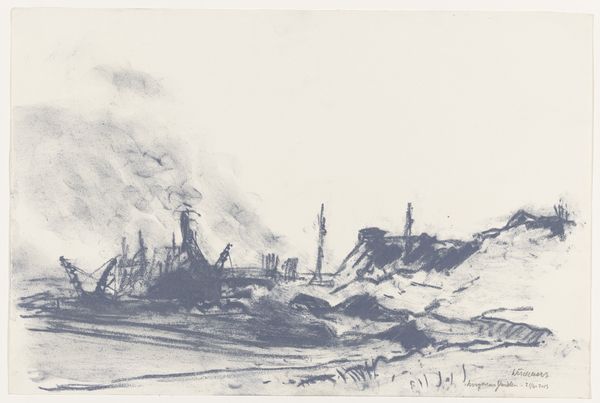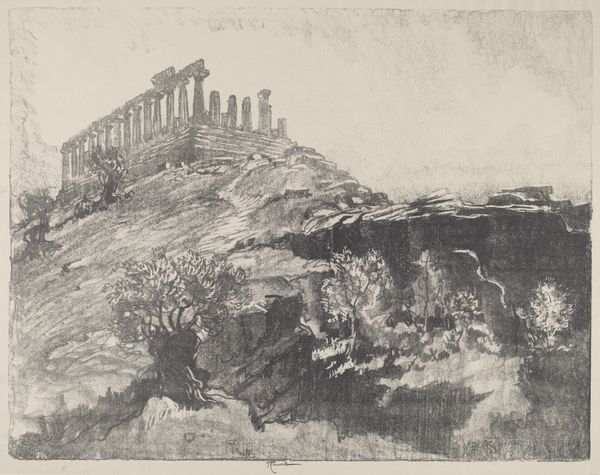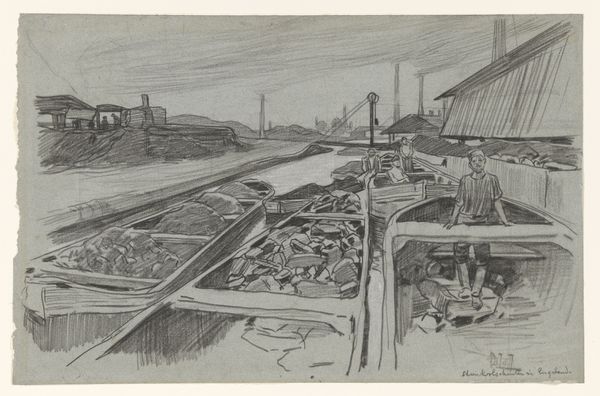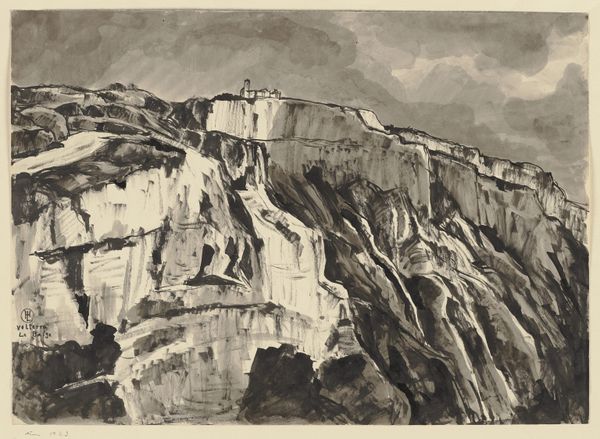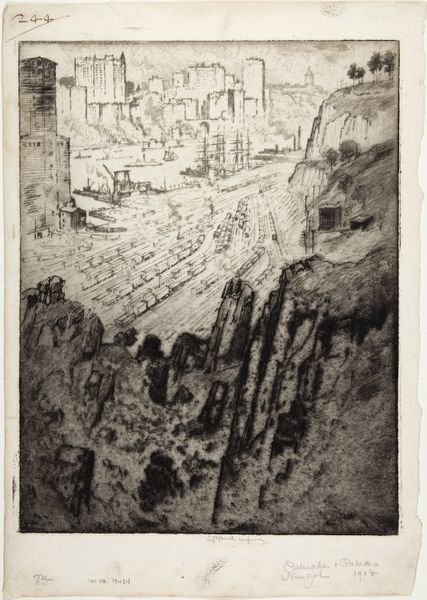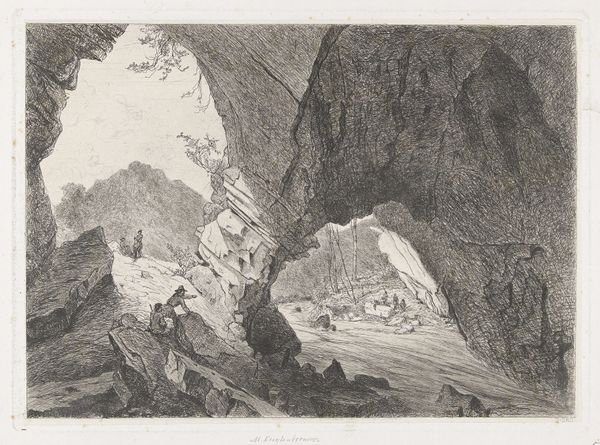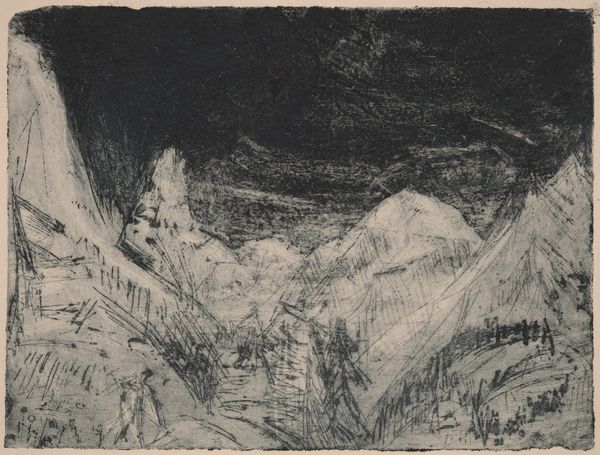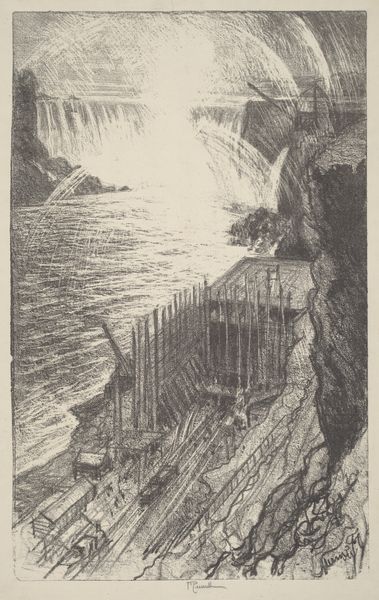
# print
#
landscape
#
geometric
#
realism
Copyright: National Gallery of Art: CC0 1.0
Editor: We’re looking at “The Iron Mine,” a print made by Joseph Pennell in 1916. It’s quite stark, and incredibly detailed. The way the mine dominates the landscape, it feels… overwhelming. What do you see in this piece? Curator: Pennell certainly captures that sense of industrial dominance. Notice how he uses the smoke billowing from the stacks; it’s almost like a visual metaphor for progress, but one that obscures and smothers the natural world. Think of iron and what it means – strength, industry, even war. Do you see any interplay between natural and man-made elements? Editor: Absolutely. The jagged lines of the mine contrast sharply with the curving river below, almost as if nature is trying to push back against the geometric forms of the industrial structures. Curator: Precisely. And what about the date – 1916? World War I was raging. Iron wasn’t just about building; it was about weaponry, about survival. This image speaks volumes about the cost of that survival, the exploitation of the land. Editor: So, the mine becomes a symbol of the era's relentless pursuit of progress, regardless of the environmental impact? Curator: Indeed. Consider, too, how Pennell chose to depict this scene in a print. Printmaking allowed for mass production of images, meaning this message, this perspective on industry, could reach a wider audience. It encourages us to consider the psychological and emotional toll of such relentless industrial growth. Editor: It’s a lot to take in, the visual weight of industry bearing down. It definitely gives you pause about the narrative of progress we're often told. Curator: Yes, it makes you contemplate what symbols we create and perpetuate through art. Editor: This has completely shifted my view; I see so much more now. Curator: And that's the power of understanding symbols. The visual vocabulary evolves and affects everyone differently over time.
Comments
No comments
Be the first to comment and join the conversation on the ultimate creative platform.
